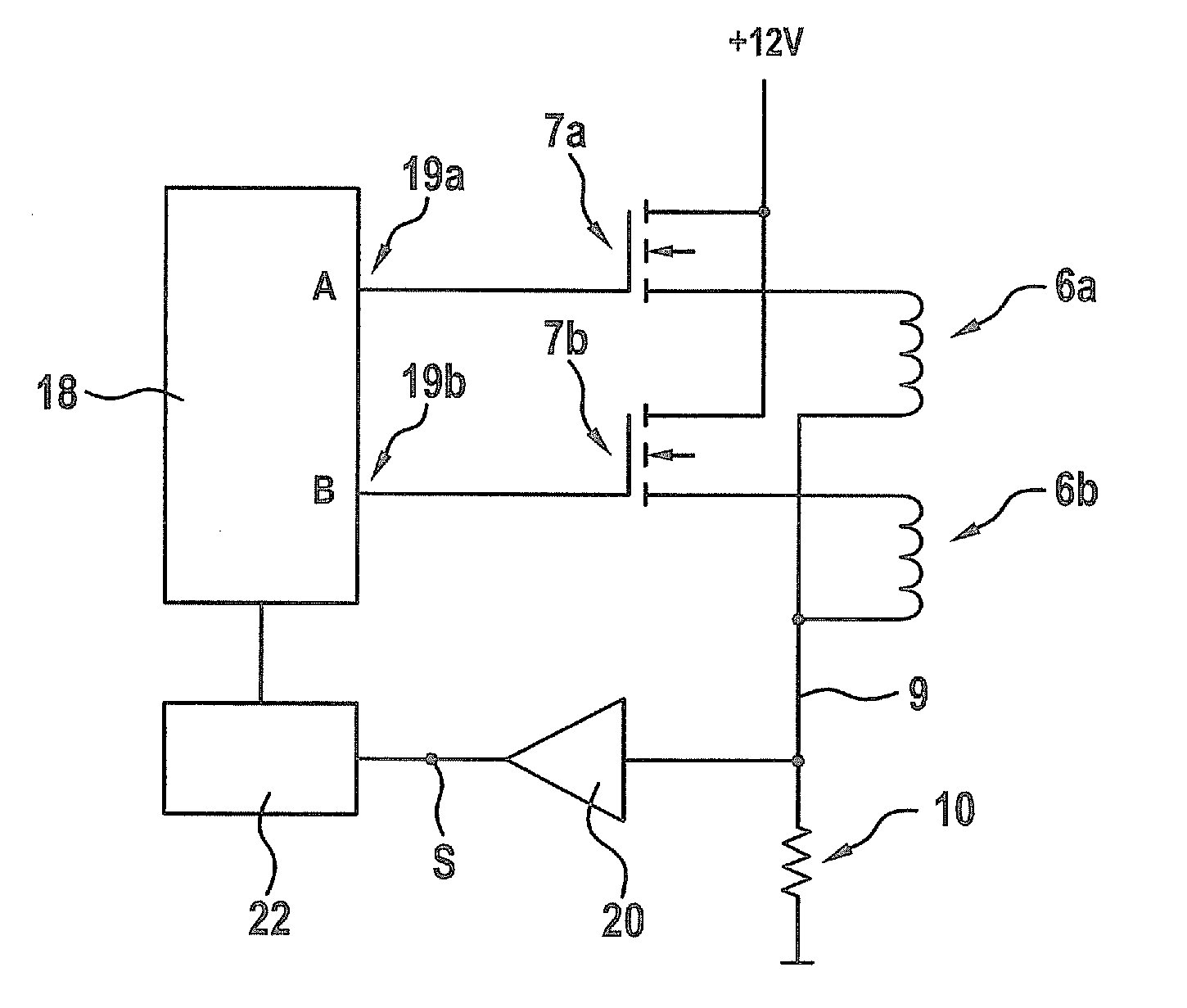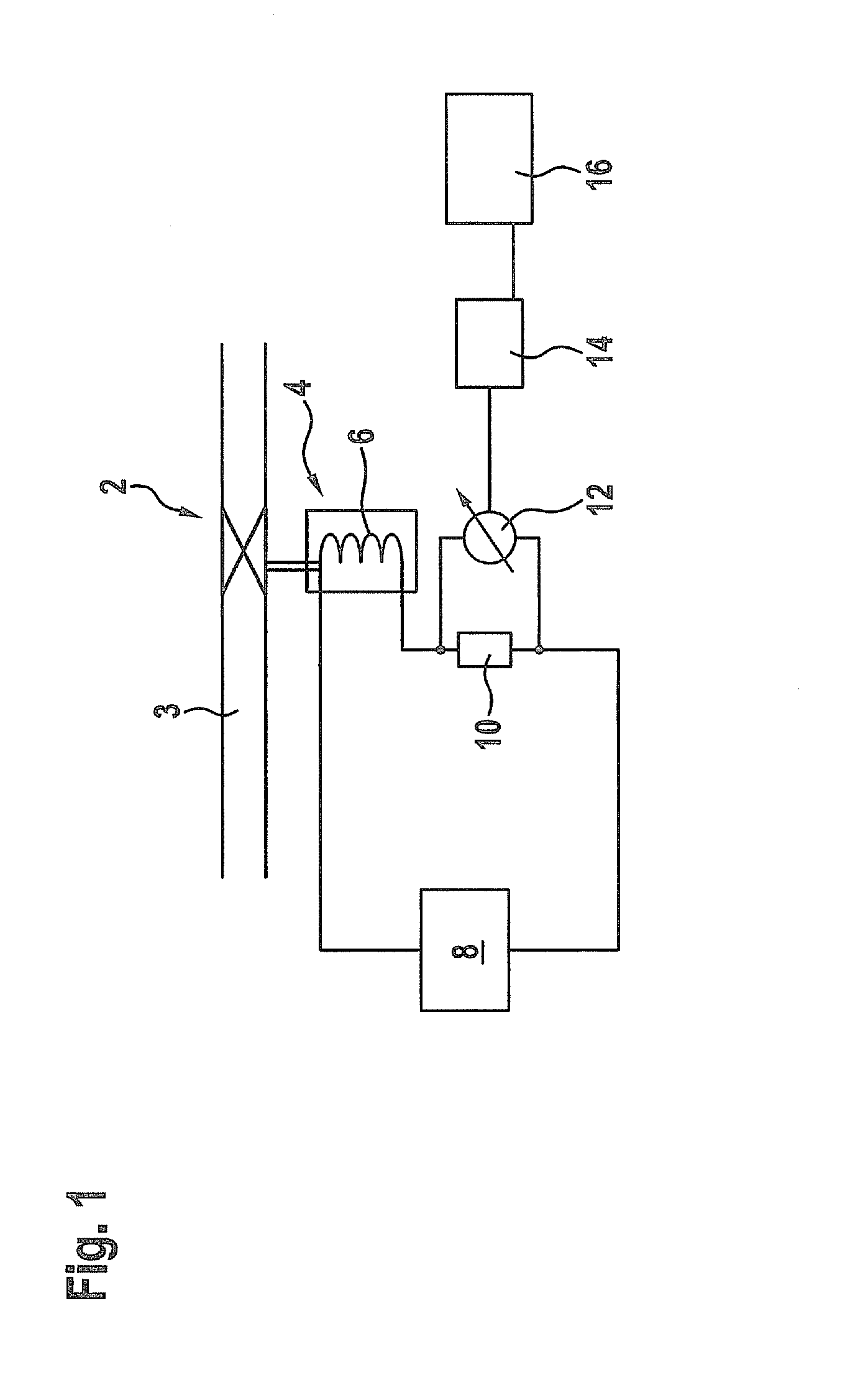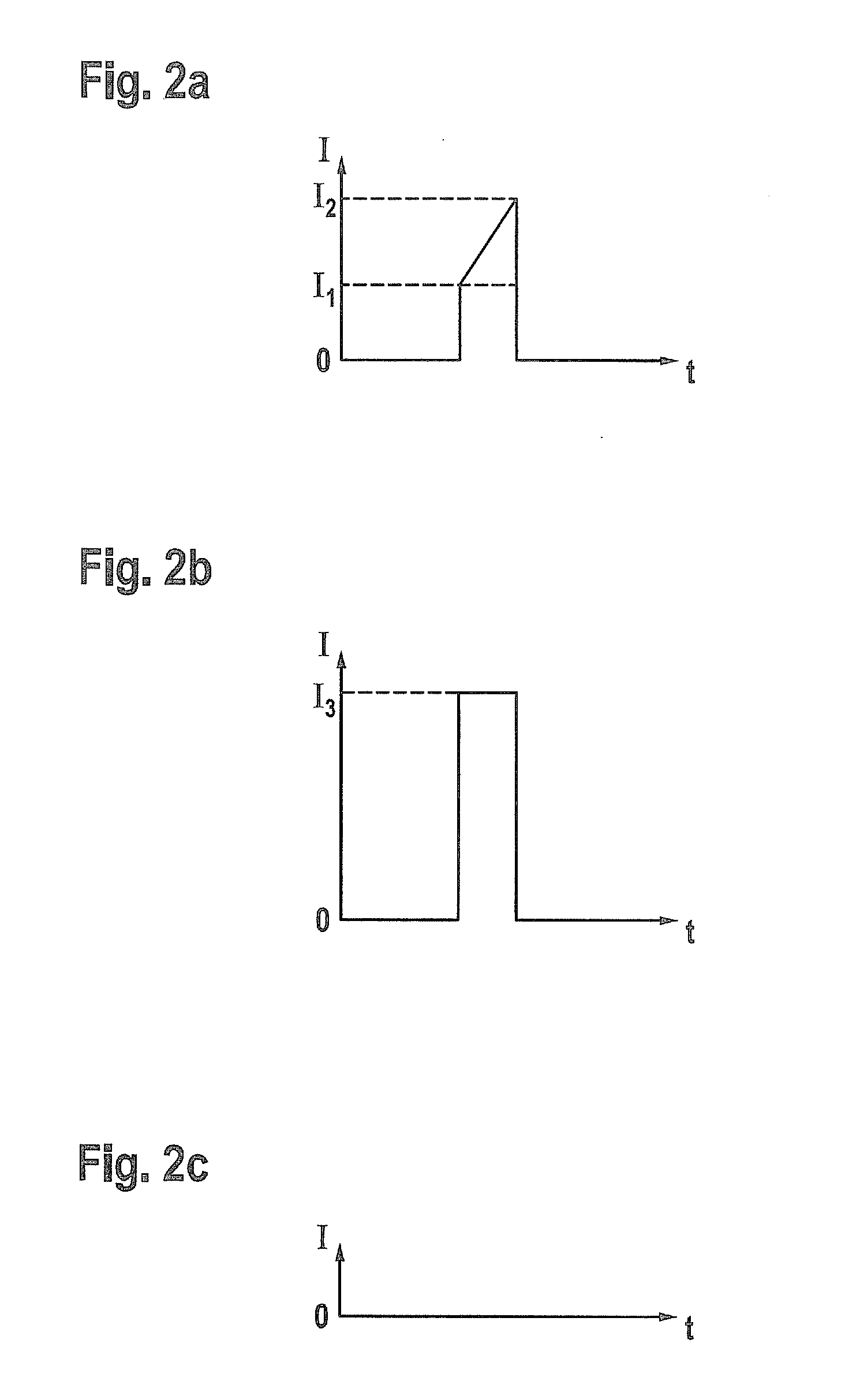Method and device for testing solenoid valves
a solenoid valve and valve body technology, applied in the direction of short-circuit testing, measurement devices, instruments, etc., can solve the problems of time-consuming and possible depressurisation of the system, and achieve the effect of reducing the time-consuming and time-consuming method for testing solenoid valves
- Summary
- Abstract
- Description
- Claims
- Application Information
AI Technical Summary
Benefits of technology
Problems solved by technology
Method used
Image
Examples
first embodiment
[0023]FIG. 1 shows a schematic view of device for testing a solenoid valve 2 arranged at a fluid conduit 3.
[0024]The solenoid valve 2 comprises a solenoid drive 4 with at least one winding 6. The solenoid drive 4 is configured to open the solenoid valve 2 when an electric current flows through said winding 6.
[0025]The test device further comprises a voltage generator 8, which is electrically connected to the winding 6 and configured to apply a short pulse of voltage, which is not long enough to open the solenoid valve 2, to the winding 6. At least one shunt 10 is arranged in the electrical connection between the voltage generator 8 and the winding 6. According to Ohm's law a voltage, which is proportional to the electrical current flowing through said shunt 10, is generated between the endings of the shunt 10. The generated voltage is measured by means of a voltage meter 12 electrically connected to the ends of the shunt 10.
[0026]The voltage meter 12 is electrically connected to an ...
second embodiment
[0040]FIG. 3 shows a schematic view of the test device which allows to test two solenoid valves 2.
[0041]From the solenoid valves 2 to be tested and the respective solenoid drives 4 only the windings 6a, 6b are shown in FIG. 3.
[0042]A voltage may be selectively applied to each of the windings 6a, 6b by means of a control unit 18, which may be a microprocessor. The voltage is selectively output at terminals 19a, 19b of the control unit 18 and supplied to the windings 6a, 6b by respectively assigned transistors 7a, 7b so that the control unit 18 does not need to provide the full current flowing through the windings 6a, 6b.
[0043]A shunt 10 is located in a common ground line 9 of the windings 6a, 6b and the voltage which is generated between the ends of the shunt 10 according to Ohm's law is amplified by an amplifier 20 and input into an analogue-digital-converter 22, which is configured for converting the amplified voltage to digital data. The digital data is supplied to the control u...
PUM
 Login to View More
Login to View More Abstract
Description
Claims
Application Information
 Login to View More
Login to View More - R&D
- Intellectual Property
- Life Sciences
- Materials
- Tech Scout
- Unparalleled Data Quality
- Higher Quality Content
- 60% Fewer Hallucinations
Browse by: Latest US Patents, China's latest patents, Technical Efficacy Thesaurus, Application Domain, Technology Topic, Popular Technical Reports.
© 2025 PatSnap. All rights reserved.Legal|Privacy policy|Modern Slavery Act Transparency Statement|Sitemap|About US| Contact US: help@patsnap.com



